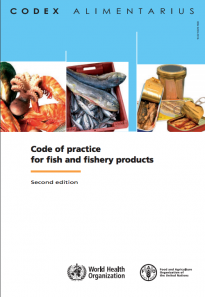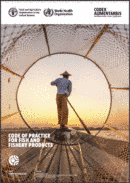Regulatory Environment for Live Fish & Shellfish Transport
Regulatory authorities should be equipped to implement national food law – which will often entail inspection and enforcement of legislation and standards. Food law should lay out the requirements for good transport practices and food safety requirements that minimize food loss and waste (FLW).
The Codex Alimentarius Code of Practice for Fish and Fishery Products is a reference point for good transport practices that can become legal requirements. It provides guidelines on holding and transportation, storage and transportation of live fish, live fish stored and transported at ambient temperature and live fish stored and transported at low temperatures. For example:
- Harvesting should be rapid so that fish are not exposed unduly to high temperatures.
- Where fish is transported live, care should be taken to avoid overcrowding and to minimize bruising.
- Where fish are held or transported live, care should be taken to maintain factors that affect fish health (e.g. CO2, O2, temperature and nitrogenous wastes).
- Live fish should not be subjected to extremes of heat or cold or sudden variations in temperature and salinity.
- Fish should be purged, where necessary, to reduce gut contents and pollution of fish during further processing.
- All equipment and holding facilities should be easy to clean and to disinfect and should be cleaned and disinfected regularly and as appropriate.
Regulations in Practice: Australian Seafood Air Transport
Regulations in Practice: Australian Seafood Air Transport
Australian Seafood Air Transport Regulations define packaging performance requirements, packing methods and a package approval system that is managed by the airline Engineering groups. It is a requirement of the airlines that all packaging used to transport seafood by air is tested against the standards defined in the Seafood Air Transport Regulations and, if acceptable, an approval number issued. The Seafood Air Transport Regulations are updated each year and regularly reviewed to ensure that a consistently high standard is maintained.
Regulations in Practice: U.S. Aquatic Animal Health Standards Commission
Regulations in Practice: U.S. Aquatic Animal Health Standards Commission
Fish welfare is inextricably linked to mortality and hence FLW. Recommendations of the Aquatic Animal Health Standards Commission in the USA, to minimize the effect of transport on the welfare of farmed fish by air, by sea or on land within a country and includes the following:
- using a well-maintained vehicle that is appropriate to the species to be transported;
- ensuring trained and competent staff are available for loading and unloading; and to ensure swift, humane killing of the fish, if required;
- having contingency plans to address emergencies and minimize stress during transport;
- selecting suitable equipment for loading and unloading of the vehicle
Key Publications
Code of Practice for Fish and Fishery Products Codes of practice and guidelines designed to help meet standards and comply with legislation (e.g the Codex Alimentarius Code of Practice for Fish and Fishery Products). | |
Australian Seafood Air Transport Regulations 2015 Defines packaging performance requirements, packing methods and a package approval system that is managed by the airline Engineering groups. | |
Welfare of Farmed Fish During Transport Recommendations to minimize the effects of transport on the welfare of farmed fish/fish. This applies to transport by air, sea or land, within a country and between countries. |
More Resources
More Resources
31 October 2023














